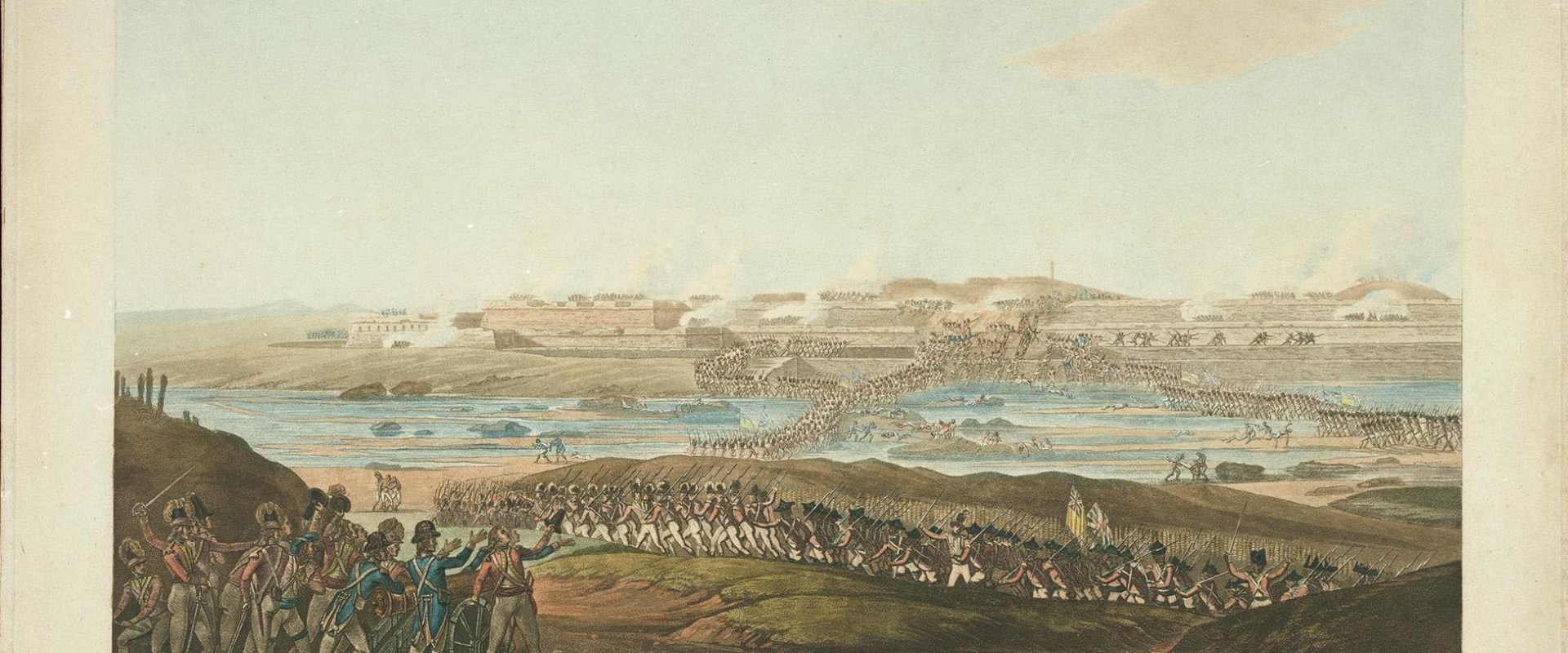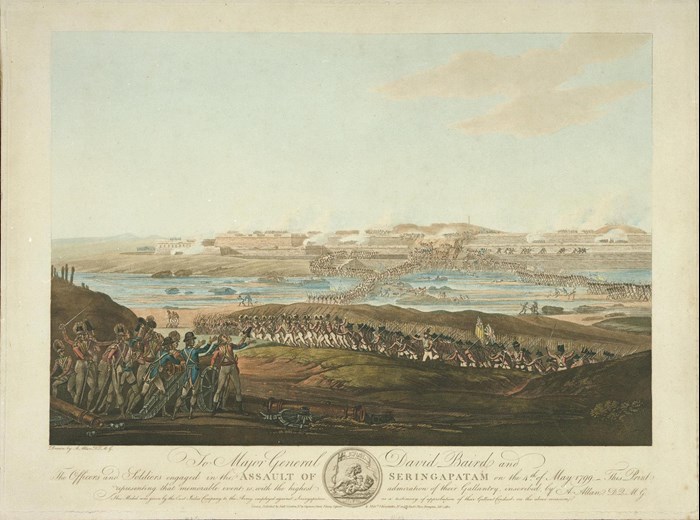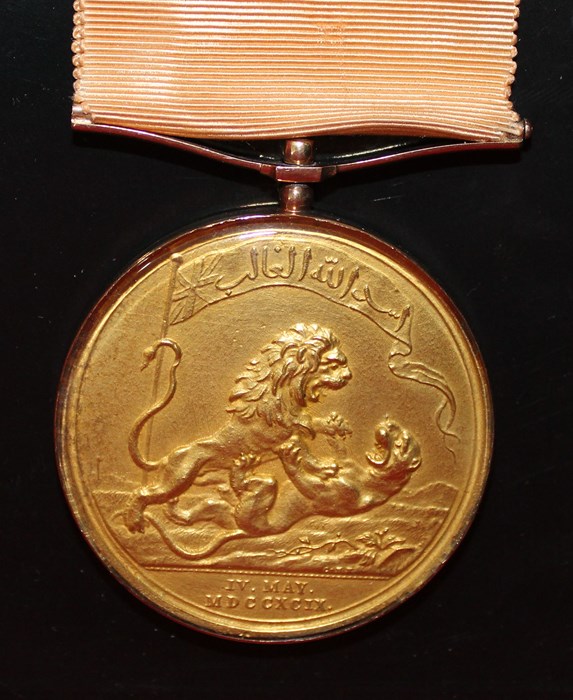Key in a search term below to search our website.
Key in a search term below to search our website.

This image, published after the siege of Seringapatam, depicts British and allied Indian troops storming the breach of Tipu Sultan’s fortress.
Date
1801
Museum reference
Did you know?
The aquatint technique was favoured for reproducing drawings made by war artists during campaigns as the process accurately replicated the commonly used watercolour medium.

This image was published by Anthony Cardon and Schiavonetti, London in February 1802, after an image by Captain Alexander Allan, who was Deputy Quartermaster General during the Fourth Anglo-Mysore War against Tipu Sultan. It depicts a group of artillery men in the foreground, while in the distance British and allied Indian troops are crossing the River Kaveri and storming the breach of Tipu Sultan’s fortress.
Through commemorative images such as these, as well as theatrical spectacles and the display of Tipu Sultan-related material in exhibitions throughout the United Kingdom (including the artist Sir Robert Ker Porter’s 2550 square foot panorama The Storming of Seringapatam c. 1800), ‘Tipu-mania’ was sustained throughout the 19th century.
The medal reproduced in the border of this image was commissioned by the British East India Company and was awarded to both British and Indian troops who participated in the conflict. Medals were made of varied material – ranging from gold to bronze to tin – assigned in order of rank of the individual involved. The medal depicts a British lion victorious over a tiger, Tipu Sultan’s personal emblem. On the pennant above is an Arabic inscription which reads: ‘The Victorious Lion of God’. The medal was designed by the German engraver Conrad Heinrich Küchler.

Above: Gold medal for Seringapatam awarded to Lieutenant General Sir Archibald Campbell, on display in Gallery 1: A Nation in Arms at the National War Museum.